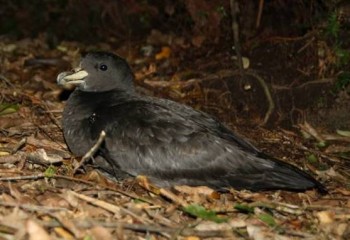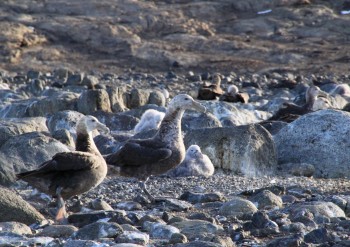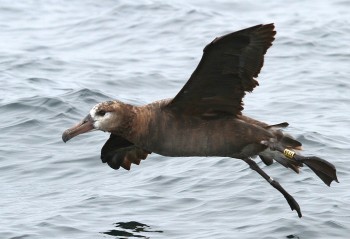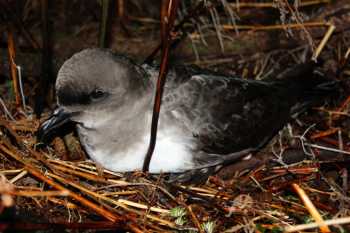Julie McInnes (Institute for Marine and Antarctic Studies, University of Tasmania, Hobart, Australia) and colleagues have published in the journal Methods in Ecology and Evolution on DNA metabarcoding protocols to study diets via faeces, using the Shy Albatross Thalassarche cauta.
The paper’s summary follows:
“1. DNA metabarcoding of food in animal scats provides a non-invasive dietary analysis method for vertebrates. A variety of molecular approaches can be used to recover dietary DNA from scats; however, many of these also recover non-food DNA. Blocking primers can be used to inhibit amplification of some non-target DNA, but this may not always be feasible, especially when multiple distinct non-target groups are present.
2. We have developed scat collection protocols to optimise the detection of food DNA in vertebrate scat samples. Using shy albatross Thalassarche cauta as a case study, we investigated how DNA amplification success and the proportion of food DNA detected are influenced by both environmental and physiological parameters. We show that both the amount and type of non-target DNA vary with sample freshness, the collection substrate, fasting period and developmental stage of the consumer.
3. Fresh scat samples yielded the highest proportion of food sequences. Collecting scats from dirt substrates reduced the proportion of food DNA and increased the proportion of contaminating DNA. Food DNA detection rates changed throughout the albatross breeding season and related to the time since feeding and the developmental stage of the animal. Fasting albatross produced scats dominated by parasite amplicons in universal PCR analysis, with little food DNA recovered. Samples from very young animals also produced reduced food DNA proportions.
4. Based on our observations, we recommend the following procedures for field scat collections to ensure high quality samples for dietary DNA metabarcoding studies. Ideally, (i) collect fresh scats; (ii) from surfaces with minimal contamination (e.g. rock or ice); (iii) collect scats from animals with minimum time since feeding and avoid fasting animals; (iv) avoid young animals that are not feeding directly (e.g. not weaned or fledged) or target larger/older individuals. The optimised field sampling protocols that we describe will improve the quality of dietary data from vertebrates by focusing on samples most likely to contain food DNA. They will also help minimise contamination issues from non-target DNA and provide standardised field methods in this rapidly expanding area of research.”
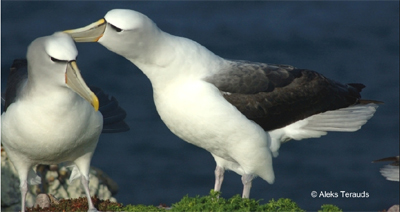
Shy Albatrosses, photograph by Aleks Terauds
Click here to acess related papers on metabarcoding by Julia McInnes.
Reference:
McInnes, J.C., Alderman, R., Deagle, B., Lea, M.-A., Raymond, B. & Jarman, S.N. 2017. Optimised scat collection protocols for dietary DNA metabarcoding in vertebrates. Methods in Ecology and Evolution 8: 192-202.
John Cooper, ACAP Information Officer, 09 November 2017

 English
English  Français
Français  Español
Español 